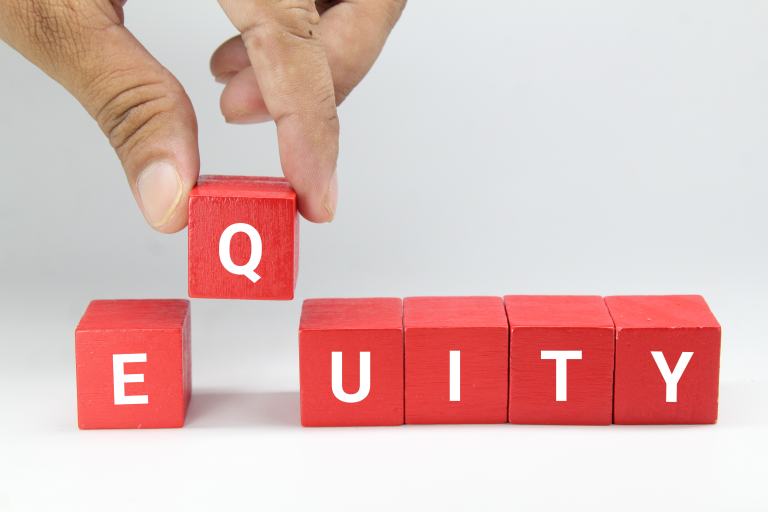When homeowners need to fund a goal—whether it’s to purchase a second property, help out a family member, or to fund an unexpected expense—many look to access the equity in their homes. While there are many financial strategies that you can recommend to clients looking to make the most of their equity, a reverse mortgage is often touted as a popular option—especially for seniors. However, there are other solutions that could offer greater benefits depending on the borrower’s situation.
To help you provide the best value to clients, this article analyzes two of these solutions: a reverse mortgage and an equity take out.
What is an equity take out?
An equity take out (ETO), also known as a second mortgage, allows a homeowner to access the equity they’ve built in their home over time. With a second mortgage, a homeowner can borrow up to 80% of their home’s value (taking into consideration any outstanding amount on any existing mortgage). Similar to a first mortgage, the homeowner is able to borrow a lump sum amount and they would then repay in monthly payments. Unlike a mortgage from a traditional lender, a private lender may offer more flexible repayment options, such as interest-only payments or the ability to pre-pay the mortgage for the all or part of the term. These options can provide cash flow relief to the borrower over the life of the mortgage.
Second mortgages are a short-term financing solution, often with a maximum 12-month term. Banks and other traditional lenders don’t offer second mortgages—except in the form of a revolving home equity line of credit (HELOC)—but homeowners can look to private lenders like CMI if they’re interested in learning more about this option.

Pros and cons of an equity take out
If you believe that your client could benefit from a second mortgage, discuss with them the pros and cons of this financing solution and ensure they understand the importance of a sound exit strategy. A second mortgage can be a great solution for clients that need to clear debts that have high interest rates attached, secure capital to help their family or business, or finance major renovations to their home. A borrower will also be making consistent monthly repayments that could be set up on the same schedule as their first mortgage.
However, borrowers need to consider that an equity take out loan in the form of a second from a private lender will likely be at a higher rate for a lower loan amount compared to a first mortgage with a traditional lender. This is because the lender is taking on greater risk by being in the second security position. Specifically, if a homeowner defaults on their mortgage payments, the lender of the first mortgage would be paid out first. In addition, the borrower needs to consider additional expenses, such as closing costs and appraisal fees, which may need to be paid upfront.
What is a reverse mortgage?
A reverse mortgage is another option that allows a homeowner to borrow against the equity in their home; however, the difference lies in how the loan is repaid. Reverse mortgages are intended for seniors age 55 or older, since they’re able to take out a lump sum, a line of credit, or monthly installments without having to worry about making any repayments during the term of the loan. Rather, the loan is repaid when the homeowner moves out; sells or transfers ownership of the property; moves into long-term care or a retirement home; defaults on the reverse mortgage or dies. Once the house is sold, the mortgage plus accrued interest will need to be repaid in a single, large lump sum. Any residual in excess of that amount will go to the homeowner’s heirs.
Pros and cons of a reverse mortgage
Similar to a second mortgage, if you find that a reverse mortgage could work for your client, it’s important that they understand the benefits, drawbacks and potential repercussions of this financing solution. To be eligible, the home used to secure a reverse mortgage must usually be the borrower’s primary residence. This typically means they must live in the home for at least six months a year.
One of the biggest benefits to a reverse mortgage is the fact that there are no monthly payments and the homeowner doesn’t need to be displaced—they can stay in their home until they decide to sell or for the rest of their lives. It’s a great option for seniors who have retired and don’t have a steady source of income. Another benefit is this money doesn’t affect any Old Age Security (OAS) or Guaranteed Income Supplement (GIS) benefits the homeowner may be receiving.
However, unlike an equity take out mortgage, where a homeowner can typically borrow up to 80% of their home’s value, a reverse mortgage is usually capped at a maximum of 55% Also, there are costs associated with a reverse mortgage that may include home appraisal fees, set-up fees prepayment penalties (if the homeowner pays off the reverse mortgage before it’s due), legal fees and closing costs. These costs may vary depending on the lender.
Additionally, it’s important to understand that a reverse mortgage accrues interest which is added to the loan balance. This option also generally requires a substantial amount of home equity and could impact a borrower’s family if things don’t go to plan. In addition, if the value of the home decreases and it sells for lower than the loan amount, it could be difficult for the borrower or the borrower’s estate to meet their repayment obligations. Most reverse mortgages contain a protection clause that protects the borrower and their heirs from owing more than the value of the home when the loan becomes due, and it is for this reason most reverse mortgages are capped at a much lower loan-to-value (e.g. 55%) than an equity take out mortgage (e.g. 80%).
Like any mortgage contract, it is extremely important to thoroughly review all features, fees, terms and conditions with the homeowner so that there are no surprises when it comes time to repay the reverse mortgage.

Which solution is right for your client?
A second mortgage and a reverse mortgage are both popular options that borrowers can use to tap into the equity in their home—but which one is right for your client?
A reverse mortgage is intended to be a financing solution for seniors that may not have a consistent source of income, whereas a second mortgage may be better suited to homeowners that have more regular and reliable cash flow. Seniors may choose to go with an equity take out over a reverse mortgage if they are concerned about their estate or the maximum loan to value is either insufficient or would deem them ineligible due to an existing mortgage.
If a borrower already has an existing reverse mortgage but still requires additional funds, certain private lenders like CMI may be able to provide a second mortgage behind their existing loan.
Talk to your trusted team
All borrowers should be vigilant when considering their financing options, but seniors in particular should be cautious, as they could be more vulnerable to mortgage fraud or predatory lenders. It’s important to partner with lenders that have a proven track record and transparent lending practices. At CMI, we’re here to help you evaluate the best financing solutions for your clients. In addition, encourage clients to speak to their financial planners, as estate planning is also an important consideration for seniors looking to access their home equity to fund financial needs and goals.
Partner with CMI today and see why we’re preferred by brokers across Canada. With access to more than $1 billion in capital, we lend everywhere from cities to towns and everything in between.